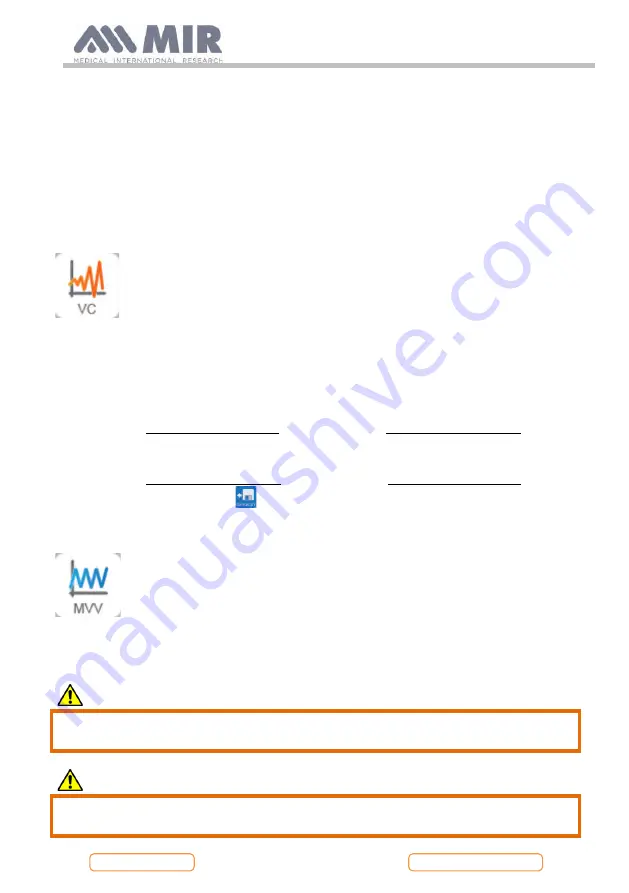
Spirolab
Rev.1.8
Page 42 of 60
proportional to the speed at which air is being inhaled and exhaled. This helps the doctor
understand when the rate of air flow is approaching zero and therefore when the patient
has exhausted the volume available in exhalation and inhalation.
The section dedicated to maintenance also describes how this feature is also useful for easily
checking that the volume and air flow sensors are working properly.
Apart from requiring a deep exhalation of breath for the results of an FVC test to be reliable,
the Forced Expiratory Time (FET) must also be long enough to allow the complete
expulsion of all the air in the lungs.
2.9.2
VC test
Ventilatory profile
You can start testing Slow Vital Capacity by breathing at rest. After three or four similar
consecutive breaths, a continuous beep warns the user that the ventilatory profile has been
measured and that VC or IVC can now be measured.
Slow Expiratory Vital Capacity: VC
After the beep,
inhale as slowly as possible
and subsequently
exhale as slowly as possible
.
Slow Inhalatory Vital Capacity: IVC
After the beep,
exhale as slowly as possible
and subsequently
inhale as slowly as possible
.
On completion of the test, tap
.
2.9.3
MVV test
Start the test with a series of forced inhalations and exhalations at the fastest speed
possible. The recommended frequency is 30 breaths/minute.
The test ends automatically after 12 seconds.
WARNING
To test the service menu test, check that the parameter relating to said test is
enabled in "Set parameters"; otherwise, the icon will be disabled.
WARNING
It is important to remember to change the disposable mouthpiece and the
disposable turbine at the end of a patient's test session.
















































